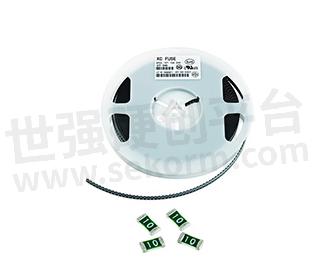Discussion on the Application of Fuses on LED Beads

1、 Firstly, analyze the causes of LED bead damage, which are usually caused by the following reasons
① A sudden increase in power supply voltage.
② The temperature inside the lamp is too high
③ Short circuit in the circuit.
④ Failure to do a good job in preventing static electricity during assembly has caused damage to the interior of the LED lamp beads due to static electricity. Although normal voltage and current values are applied, it is extremely easy to cause damage to LED beads
⑤ The voltage and current of the circuit are unstable.
2、 How to protect the circuit of LED beads?
Answer: Nowadays, many circuits use Fuses for overload protection, but disposable fuses are not suitable for LED lamp products because the circuits of LED beads are very different from those of other products. LED bead circuit overload is caused by the overload protection component, which immediately disconnects the LED bead circuit and automatically restores power supply after the circuit is normal, without affecting LED operation. Moreover, the circuit should not be too complex, bulky, and cost-effective, making it difficult to achieve a one-time fuse.
3、 To solve the overload problem of LED bead circuits, there are two ways to start
1. Select self recovery fuse
① Shunt protection. Generally, LED lights are divided into many series connected branches. We can add a PTC component in front of each branch for protection. The advantages of this method are high accuracy and good reliability of protection.
② Overall protection. Add a PTC component in front of all light beads to protect the entire lamp. The advantage of this method is that it is simple and does not take up volume. For civilian products, the results of this protection in practical use are still satisfactory.
2. Using Transient Voltage Suppression Diodes (TVS)
Transient voltage suppression diode is a high-efficiency protective device in the form of a diode. When its poles are subjected to reverse transient high-energy shocks, it can immediately reduce the high resistance between its poles to low resistance at a speed of 10 to the negative 12th power second, absorbing up to several kilowatts of surge power, clamping the voltage between the poles at a predetermined voltage value, effectively protecting precision components in electronic circuits. Transient voltage suppression diodes have the advantages of fast response time, high transient power, low leakage current, good consistency of breakdown voltage deviation, easy control of clamping voltage, no damage limit, and small volume.

Fig.1
- +1 Like
- Add to Favorites
Recommend
- The Difference between Fuses and Fuses
- Repair Methods for Fuses -0805 Fuses
- What Is The Difference between Resettable Fuses and Traditional Fuses?
- Guidelines for Selecting Self Restoring Fuses and Disposable Fuses
- The Price Trend and Future of Fuses
- What are the Differences in Performance and Applications between Slow Blown Fuses and Fast Blown Fuses?
- GRL Provides Fuses and Fuses for BYD AUTO Energy Storage Battery Production Line
- Why are Domestic Fuses Cheap?
This document is provided by Sekorm Platform for VIP exclusive service. The copyright is owned by Sekorm. Without authorization, any medias, websites or individual are not allowed to reprint. When authorizing the reprint, the link of www.sekorm.com must be indicated.






























































































































































































































































































































































































































































































































































































































































































































































































































































































